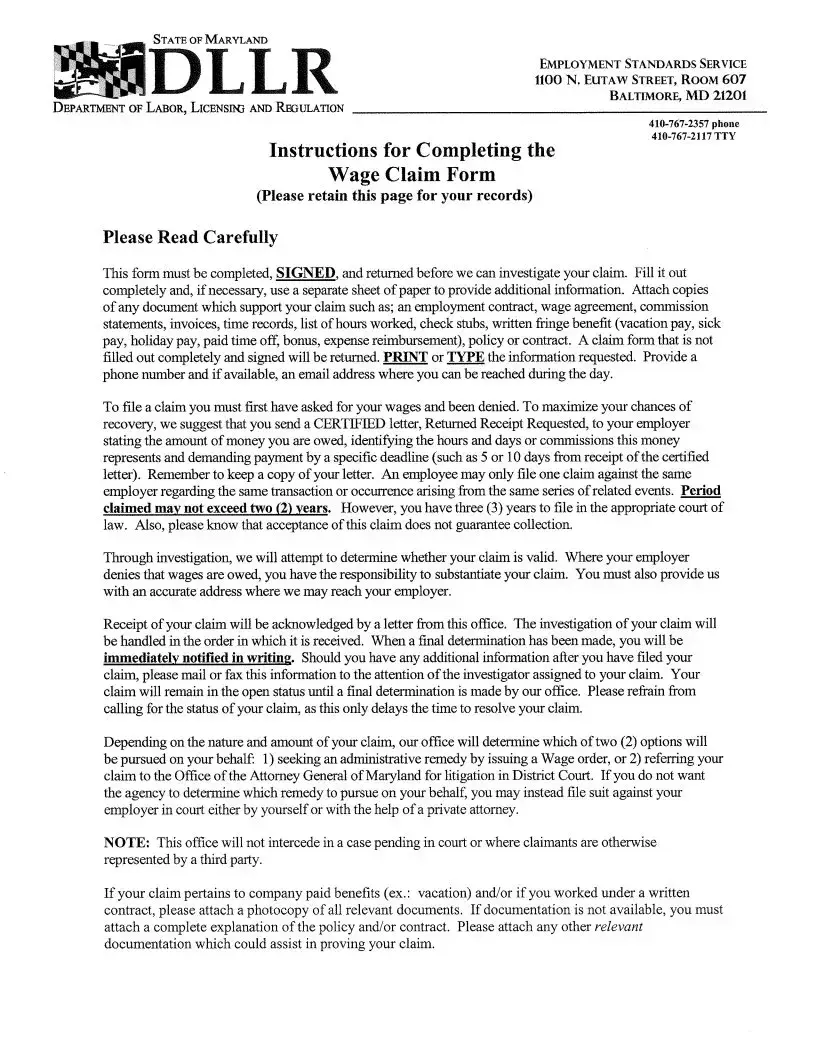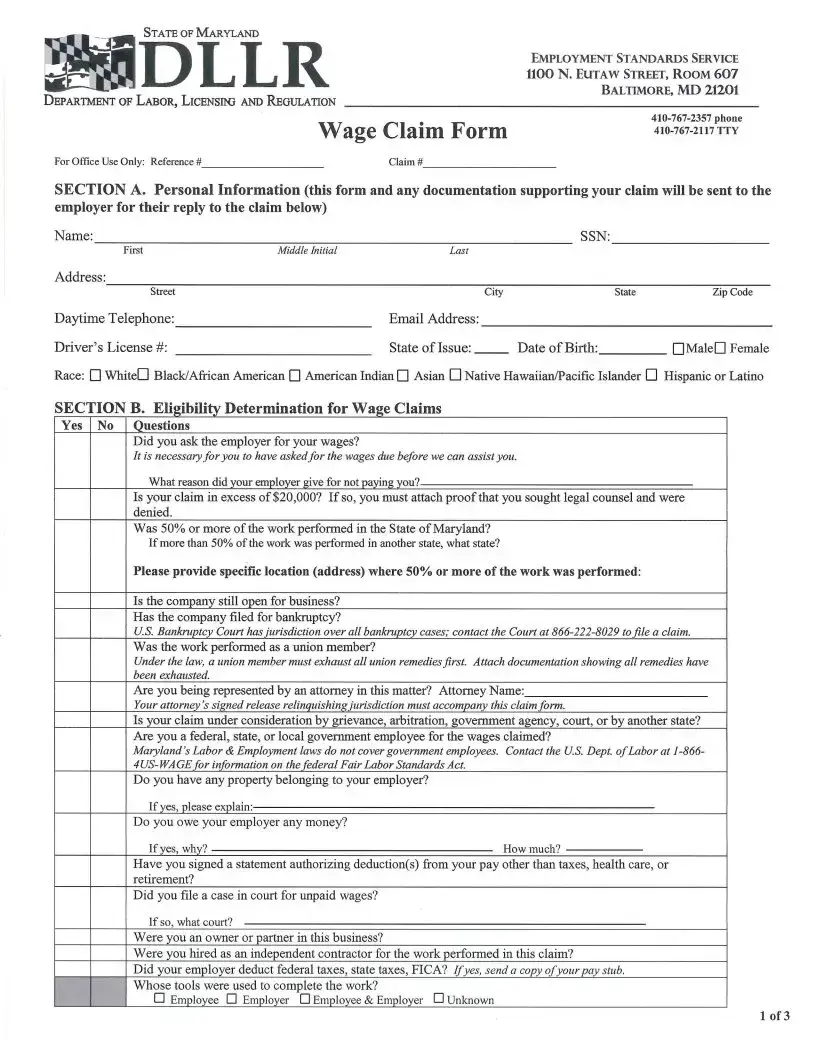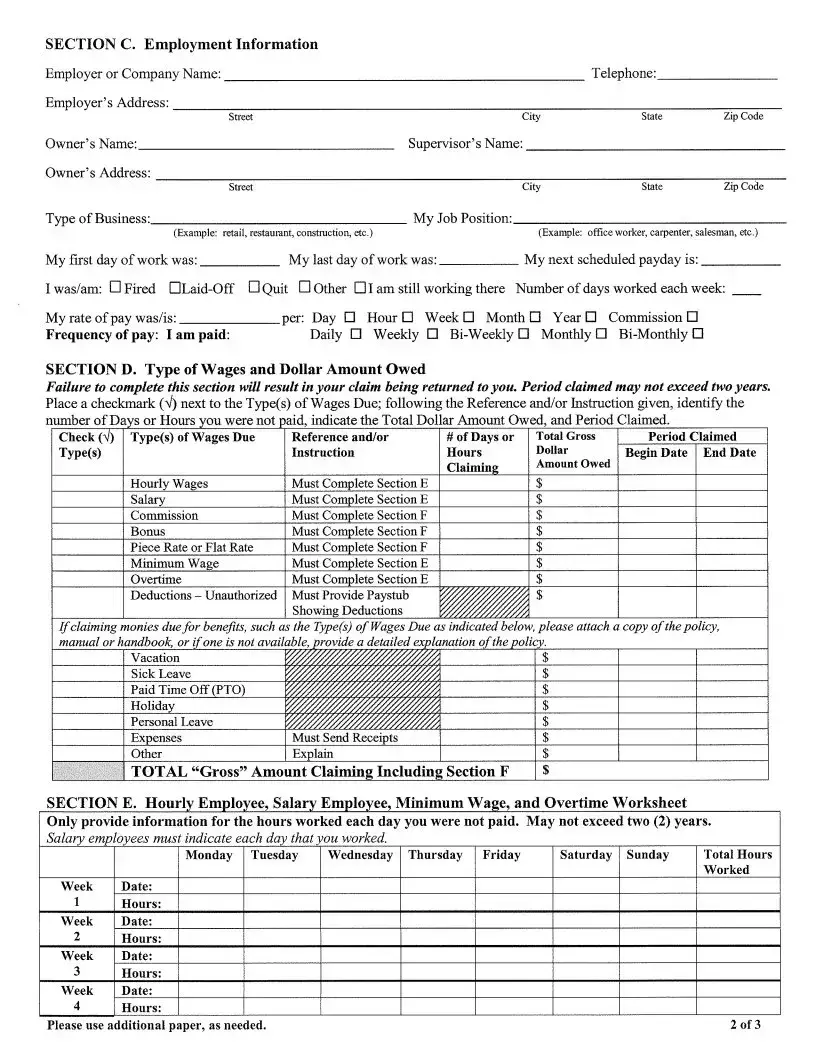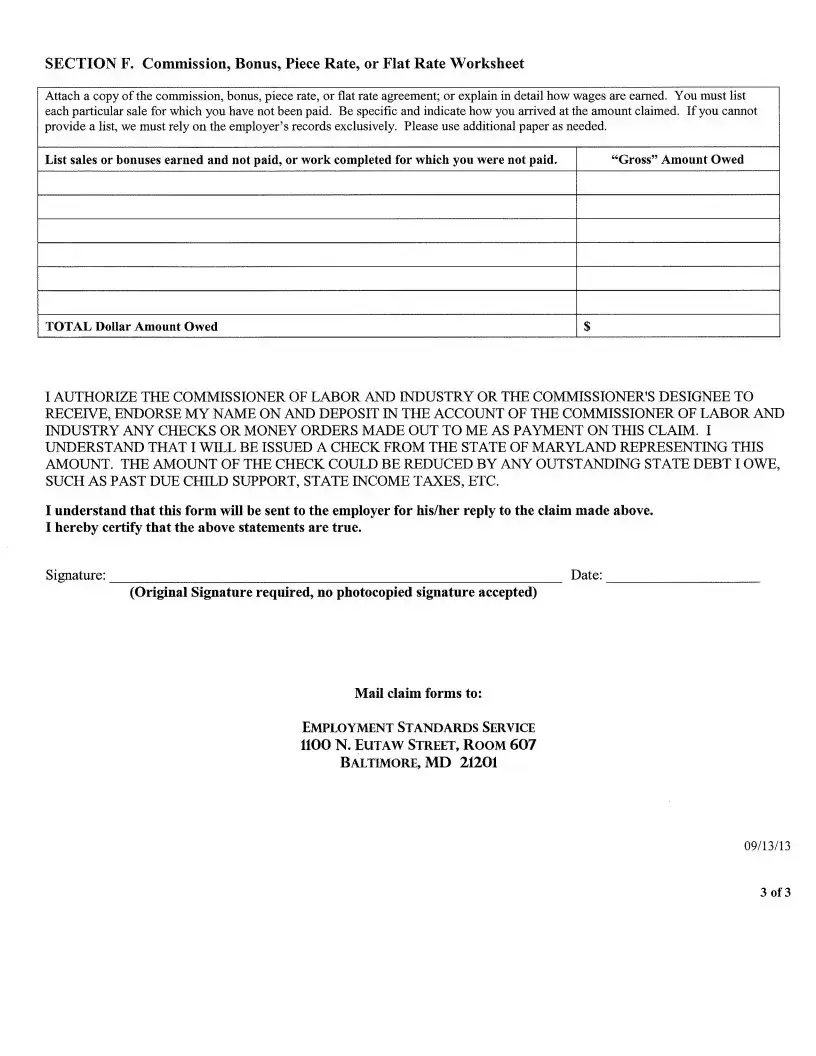The Maryland Wage Claim form is a document utilized by employees to formally report a dispute regarding unpaid wages. This includes discrepancies such as unpaid overtime, bonuses, commissions, or any other form of compensation that was agreed upon but not received from their employer.
Who can file a Maryland Wage Claim?
Any employee who believes they have not been paid the wages they are owed by their employer can file a Maryland Wage Claim. This applies to all types of employees, including full-time, part-time, temporary, and seasonal workers in Maryland.
The process for filing a Maryland Wage Claim involves several steps:
-
Obtain the Maryland Wage Claim form from the Maryland Department of Labor's website.
-
Completely fill out the form, providing detailed information about the employment and the wage dispute.
-
Attach any relevant documentation that supports the claim (e.g., pay stubs, employment contracts, emails regarding pay).
-
Submit the completed form and all supporting documents to the Maryland Department of Labor by mail, fax, or in person.
To properly complete the Maryland Wage Claim form, an individual must provide the following information:
-
Personal information, including name, address, and contact details.
-
Information about the employer, such as the company's name, address, and the name of the supervisor or owner.
-
Details of the employment, including date of hire, position held, and pay rate.
-
Specifics of the wage dispute, including the type of wages claimed and the amount.
-
Any relevant dates related to the dispute, such as the last day worked or when the wages were supposed to be paid.
Can the Maryland Department of Labor reject a Wage Claim?
Yes, the Maryland Department of Labor can reject a Wage Claim if it is incomplete, lacks necessary documentation, or if the claim does not fall under the jurisdiction of the Maryland Wage Payment and Collection Law. It is essential for claimants to thoroughly complete the form and provide all requested supporting documentation to avoid rejection.
What happens after a Wage Claim is filed?
After a Wage Claim is filed, the Maryland Department of Labor will review the submission to determine its validity. If the claim is accepted, the Department may conduct an investigation, which includes contacting the employer, reviewing documentation, and possibly arranging a meeting or hearing. The goal is to reach a resolution that ensures the employee receives the unpaid wages.
How long does the process take?
The duration of the process can vary depending on the complexity of the wage dispute and the workload of the Maryland Department of Labor at the time of filing. In general, claimants can expect the process to take several weeks to several months from the date of filing to resolution.
Is there a time limit for filing a Wage Claim in Maryland?
Yes, there is a time limit for filing a Wage Claim in Maryland. Claims must be filed within three years from the date the unpaid wages were due. It is important to file a claim as soon as possible to avoid exceeding this statutory deadline.
Can an employee face retaliation for filing a Wage Claim?
No, employers are prohibited from retaliating against an employee for filing a Wage Claim with the Maryland Department of Labor. Retaliation may include firing, demotion, reduction in hours, or any other negative employment action taken because an employee filed a claim. Employees who believe they have been retaliated against may have additional claims against their employer.



